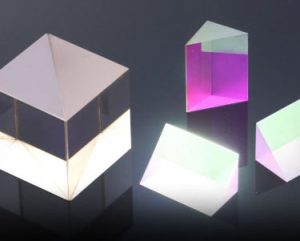Beamsplitters are important instruments in various fields, such as interferometry and optics. They come in different types and have numerous applications. However, most do not know how they work. This article covers all you need to know about beamsplitters, their types, and their applications.
What Is a Beamsplitter?
A beamsplitter is a type of optical device that splits an incident light beam into two. These tools can split both laser and regular light. It is also important to note that a beamsplitter can combine two incoming beams from distinct angles into a single output.
Types of Beamsplitters
Plate Beamsplitters
Most plate beamsplitters are made using dielectric materials and are commonly employed at 45 degrees of incidence. While similar to cube beamsplitters in that they may be configured to accommodate a wide range of incidence ratios, these devices are superior in certain respects due to their lower chromatic aberration output.
Plate beamsplitters are more affordable than cubes, which makes them the preferred choice for budding optical engineers. In addition, since their construction is less complicated, they weigh less and may be made in bigger proportions than cube beamsplitters.
Another benefit is that plate beamsplitters don’t need optical cement to hold the two halves of the prism together as cubes do. It is a benefit because lasers can damage cement more quickly, and it breaks down when exposed to UV light constantly. Lastly, these beamsplitters are thinner than cubes and need less material for light to pass through.
Cube Beamsplitters
These beamsplitters are created by coating the hypotenuse of dual prisms with a partially reflecting material and joining them with optical or epoxy cement. These beamsplitters eliminate ghosting because the transmitted beam is coherent with the incident light beam.
A cube beam splitter has a significant advantage over a plate beamsplitter because ghost images are not produced by the former. Furthermore, cubes allow users to employ a shorter optical path length than plates, maintain equal path lengths, and integrate them smoothly into an optical system by maintaining a 0-degree angle of incidence.
Polka-Dot Beamsplitters
These are beamsplitters with a polka-dot-like surface. Half of the beamsplitter’s surface consists of dots, which reflect materials created using photolithography or mechanical masking (with any desired ratio). This provides them with an almost continuous R/T ratio independent of the viewing angle.
How Does a Beamsplitter Work?
As previously mentioned, beamsplitters can divide incoming light into many streams. The incoming light’s wavelength, intensity, or polarity, as well as the beamsplitter’s construction and settings, all play a role in the splitting process.
Beamsplitters can vary in size, shape, and material, but they all work on the same principle: the splitter transmits one part while reflecting the other. In order to ensure that reflected light is directed in a desirable direction rather than back toward the source, the splitter or reflecting surface must be positioned at an appropriate angle to the incident light.
Common Applications of Beamsplitters
Beamsplitters are used to separate or combine two sources of light with precise R/T ratios. This quality of theirs makes them perfect for use in many technological contexts, such as semiconductors, sensors, lasers, and cameras. Here are some of the common applications of beamsplitters.
Heads-Up Displays (HUDs)
Beamsplitters are frequently used in head-up displays. Projected onto a surface, these images are see-through. Common head-up displays use a beamsplitter in conjunction with projection and lens systems to project an image onto the exterior of a moving vehicle via laser.
Interferometry
One of the most significant applications of this technology is interferometry. This occurs when a beam is reflected from a surface and split in half. Then, interference patterns formed by the combined beam and reflected light can be utilized to calculate distance.
Lasers
To create various beam paths, beamsplitters are commonly employed in lasers. The laser beam is divided into multiple segments and recombined to get this effect. With such a setup, the direction and intensity of the beam of light may be adjusted with remarkable precision and versatility.
Optical Equipment
Beamsplitters can be found in many types of optical equipment. Optical beamsplitters allow the beam to be divided into multiple segments that can be individually diverted with other inputs. This provides more options for directing and shaping the light beam.
Conclusion
A beamsplitter is a device that can divide or combine light depending on its purpose. The equipment works by dividing the incoming light into one to two beams, one or more of which are transmitted through the optical element and one or more of which are directed at an angle away from the optical element. Ultimately, it is a tool that is essential in many devices, such as lasers, heads-up displays, and others.

